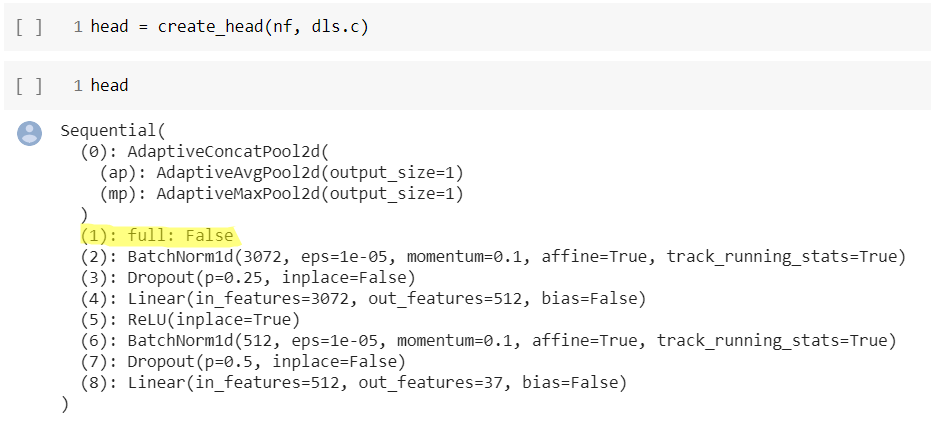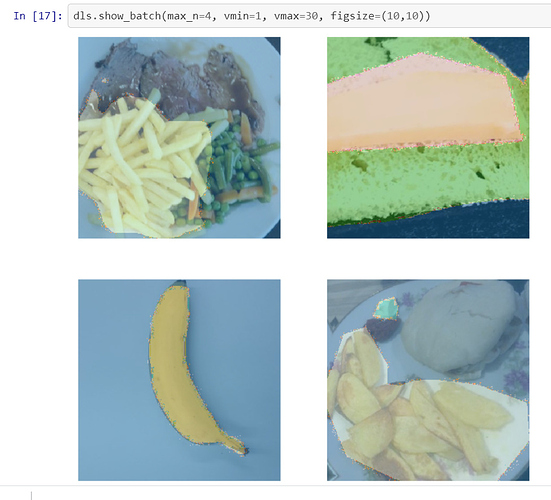hi @barnacl, i updated if you want to take a look. https://colab.research.google.com/drive/1nTetOULwzZzOZ8849QM7ZQTLcCTH3V1V#scrollTo=jpQs3pDoh7y7
I just watched last week’s video! Very interesting content @muellerzr , I loved the EfficientNet explanation  . For the theory of style transfer, I totally recommend this series for a brilliant and complementary explanation of the theory.
. For the theory of style transfer, I totally recommend this series for a brilliant and complementary explanation of the theory.
I tried to segment a food dataset (pretty cool!) following the tutorial but I am getting a weird error  . Does somebody know what the issue is? (Also, I am looking for people to join my team in this competition
. Does somebody know what the issue is? (Also, I am looking for people to join my team in this competition  )
)
RuntimeError: CUDA error: device-side assert triggered
@mgloria you found one of the most common segmentation issues and I’m also going to talk about it next lecture. I meant to put that in! That means your codes don’t align to the number of classes present in your dataset
IE: I made 4 labels but in reality there are five. If there’s a strange one because they all “should” be there, add one more blank or other category. Should fix it
@vijayabhaskar this comes from a flattening layer. Here is the source:
And in create_head:
Lastly,
For the last lecture (in vision) as it’ll be some more different use cases, what are some vision databunches that people would like examples of?
The most common question I’ve seen is Siamese, what others? 
I see! but I added at the beginning of the codes the “void” class manually to account for the background… should not this be enough? This is 0 in the mask.
Did you also try not including it too? (I assume so). It’s a hard bug to figure out. There’s a few discussions on debugging it on the forum, I’ll see what I can dig up but basically another way of doing it is finding the maximum pixel value in your mask, add 1 to it and that tells you the number of classes as well.
This is common when we don’t know how the data was prepared beforehand, and it’s an issue that you don’t realize until you’ve started working with the data
@mgloria try incorporating some of the advice here: CUDA error: device-side assert triggered
Siamese would be great! I don’t think there is much left in vision in terms of datablocks you covered it all. Only GANs are left. If I’m not asking too much, maybe Image captioning? 
If you haven’t covered super resolution, may be “super resolution”. thanks.
Tail end of the series after NLP 
@mgloria just to point out you need to update your vmin, vmax (won’t solve the CUDA error though) 
plus i think you don’t need to mention vmin, vmax. matplotlib will handle it.
You could try to find the unique values in your mask and count that to double check if you are missing something.
The error i was making was my mask was 3d instead of it being 2d.
Any reason why you are not using background in the accuracy calculation ?
mask = targ != void_code - you are saying when we calc accuracy i don’t care where we have background (i’m not sure if you want that ?)
In camvid void was used because there were some pixels which didn’t fall in any of the mask categories.
Could you point out to the dataset or a small subset (maybe upload a few to you github) would like to try out and see if i can help 
@muellerzr could we image and regression, image and multiple regression columns (not sure if i missed that.
Keypoints will cover this  but if you can provide a dataset where it’s an individual number itself (for true regression) I can include that in that lesson too (Tried looking for this but couldn’t find much) if so we’ll do single regression.
but if you can provide a dataset where it’s an individual number itself (for true regression) I can include that in that lesson too (Tried looking for this but couldn’t find much) if so we’ll do single regression.
let me look, i had one for work that was predicting brightness of images.
model explainability using LIME , saliency maps
@vijayabhaskar this was fixed in the latest fastcore (just got informed) 
@muellerzr, sorry that I could not share the data I have yet. But, I get pretty good results for my problem compared to classical regression (with hand made feature engineering) . Busy writing paper about it too.
from the blog fastai v1 used to estimate age.
- IMDB-Wiki Face Dataset ( https://data.vision.ee.ethz.ch/cvl/rrothe/imdb-wiki/)
- UTK Face Dataset ( http://aicip.eecs.utk.edu/wiki/UTKFace)
- Appa Real Face Dataset ( http://chalearnlap.cvc.uab.es/dataset/26/description/)
Also leaf count example is done but don’t know if the data is available…
This is one I’ve definitely heard of ![]()
What I’ll likely do is just provide a detailed notebook for those few other examples since I’m not quite sure how they’d fit in time wise, but they’ll be there ![]() (if the DataBlock/bunch is complex like Siamese is then I’ll talk about it in class)
(if the DataBlock/bunch is complex like Siamese is then I’ll talk about it in class)
It might be useful for future users. I just wonder if it’s possible to get both gender and age as output? With current v2 with minor modifications? Do you have any idea?

